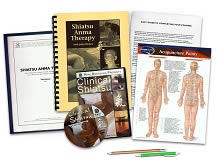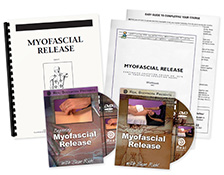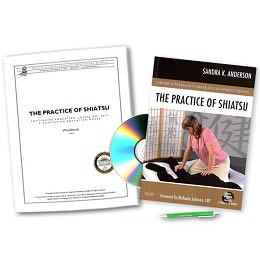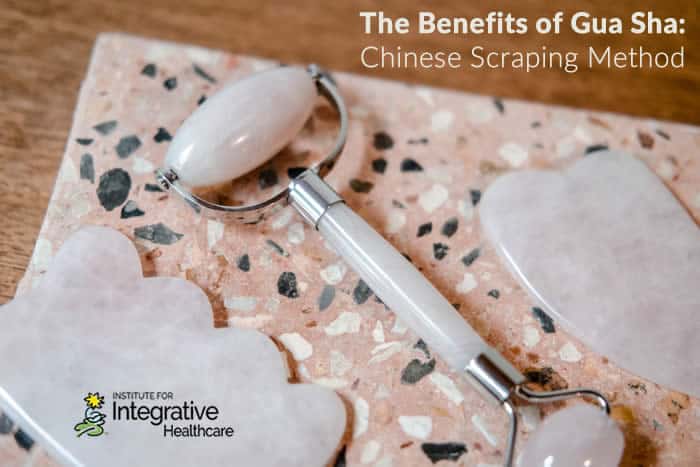

Gua Sha, the term for Chinese scraping method, has been known of hundreds of years as a healing modality. “Gua” refers to rub or massage and “sha” refers to heat and moving energy. First recorded in practice during the Ming Chinese dynasty between 1368-1644, the terms coining, scraping, and spooning have also been used to describe this work. (1)
Stones for Gua Sha Practice
Many different stones can be utilized for Gua Sha practice:
- Jadeite or Nephrite Jade are commonly used.
- Also, rose quartz and smokey quartz have been used.
- Metal varieties, including steel and graphite, have been created.
- Colored plastic varieties are sold online so be sure to read descriptions carefully to understand if you are purchasing actual stones, metal or plastic versions.
Deeper Esoteric Understanding of Gua Sha
Some people consider Gua Sha a simple myofascial release technique. Although scarping may be seen this way, a deeper esoteric understanding of Gua Sha reveals how powerful this work can be in the case of disease conditions.
To understand the traditional application of Gua Sha, it is important to describe disease from the Chinese medicine perspective. In Chinese medicine terms, disease comes in the form of Heat, Summer Heat, Cold, Dryness, Dampness and Wind. These terms represent how a condition manifests signs and symptoms throughout the body.
For example, Parkinson’s can be considered a Dryness-Wind condition: Dryness in the joints limiting mobility and Wind within the limbs creating the tremors.
Gua Sha Attempts to Aid Conditions Featuring Heat, Summer Heat and Wind
- A client showing Heat conditions will have inflamed tissues, fever, warmth and redness of skin, swelling, sweating, acute pain, and/or hot flashes.
- A client showing Summer Heat will have more extreme manifestations of Heat.
- A client showing Wind will have hyperactive mind, restless movements, headaches, tremors, respiratory disease, shooting pain, and/or transient symptoms.
4 Research Studies
Here are four research studies confirming many great benefits of including Gua Sha into treatments.
- Explore Journal, September/October 2007, Nielsen, et al, published findings that Gua Sha increased microcirculation local to a treated area and plays a role in the decrease of muscle pain (myalgia). (2)
- Journal of Complimentary Medicine, March 2017, Yeun et al, published findings that Gua Sha treatments alleviated chronic back pain in elderly patients, more than compared to patients only employing heat treatments. (3)
- Journal of the North American Menopause Society, March 2017, Meng, et al, published findings that Gua Sha was effective and safe in relieving perimenopausal symptoms and improving quality of life with perimenopausal syndrome patients. (4)
- Complimentary Therapy in Clinical Practice, May 2019, Xiaolan, et al, published findings that Gua Sha treatments reduced diabetic peripheral neuropathy symptoms. (5)
My Clients Have Reported These Benefits from Gua Sha
Within my private practice, many clients have reported these benefits after receiving Gua Sha sessions:
- Thoracic outlet syndrome patient reported significantly improved local circulation within their hands after three sessions.
- Edema patient, due to burn scars earlier in life, found success with aiding lymphatic movement and reducing edema after four treatments.
- Client with multiple post-surgical scars witnessed a reduction of scar tissue tension and integrity after three sessions.
- Construction worker with bound myofascial tissue which feels hard and restricted upon palpation witnessed significant relief of muscle tension after four sessions.
- A mother who recently gave birth, Gua Sha was included in her postpartum massage sessions and she reported an increase in milk production and decrease in mastitis related inflammation after three sessions.
- Osteoarthritis patient with chronic pain, limited range of motion, and loss of grip strength in fingers had improvements in these three areas after four sessions.
- Scoliosis patient with frequent moderate to severe headaches (at least two weekly) reported a reduction of both intensity and frequency of headaches after three sessions.
Controversial Statement
One of the controversial statements about Gua Sha concerns the lesion marks witnessed upon the skin after sessions. Gua Sha need NOT cause major bruising. This idea is subjective though as we all have different opinions of what “major” bruising may mean. What I mean by “major bruising” is the presence of profound lesions, causing much internal bleeding necessitating the body to lay down scar tissue as part of the healing process.
What to Expect
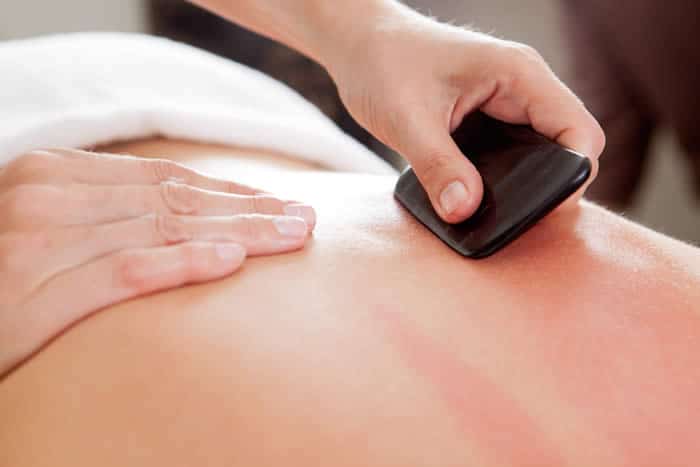
The underlying scars developing within deeper connective tissues, due to excessive internal bleeding and fascial breakdown, can result in a decrease in functional and range of motion of the body region in the long run. In the short term, the endorphin rush within the injury site can feel pleasant for clients. However, as tissue further breaks down, incomplete restoration of tissue leads to scar development for tissue to heal properly.
There can be discoloration appearing as shades of pink, red or purple. This is deemed ecchymosis, the results of bleeding underneath the skin service, typically (but not always) caused by mild bruising. The deeper the red and purple shading, the more ecchymosis witnessed.
Petechiae
Petechiae, bleeding caused by capillary rupture, can be witnessed during Gua Sha treatments. This may appear as pink to red spotting within skin ecchymosis or lesions. Petechiae can also be linked with medications including Cerebyx and Penicillin, as well as infectious conditions such as Strep throat, endocarditis, mononucleosis and Scarlet fever. If a client has vasculitis, thrombocytopenia, leukemia or a vitamin K deficiency, Gua Sha could induce excessive petechiae. (6)
The presence of hematomas (blood blisters), excessive ecchymosis and severe petechiae are signs Gua Sha was done very intensely. It is important to stop scraping treatments when skin lesions observed become excessive, when skin becomes irritated, itches or burns, and when client expresses verbal statements or non-verbal cues of discomfort.
Check in often with clients as everyone reacts uniquely to sessions. Please do not leave the table space during a session. There is no set time frame Gua Sha tools can be used upon the body. Some people’s skin will react within seconds whereas other people take several minutes to see skin changes occur. Ideally, a pink to red discoloration is seen with no intense bruising after session.
Stretching and Self-Care
I encourage clients to stretch and maintain self-care habits after receiving a Gua Sha treatment. Stretching will reinforce the length provided tissues after treatment.
Other self-care habits to benefit will include:
- cool topical agents
- calming breathwork
- essential oil applications to cool the skin after treatments (peppermint, wintergreen, eucalyptus, geranium and/or lavender) (7)
- and keeping activity light.

